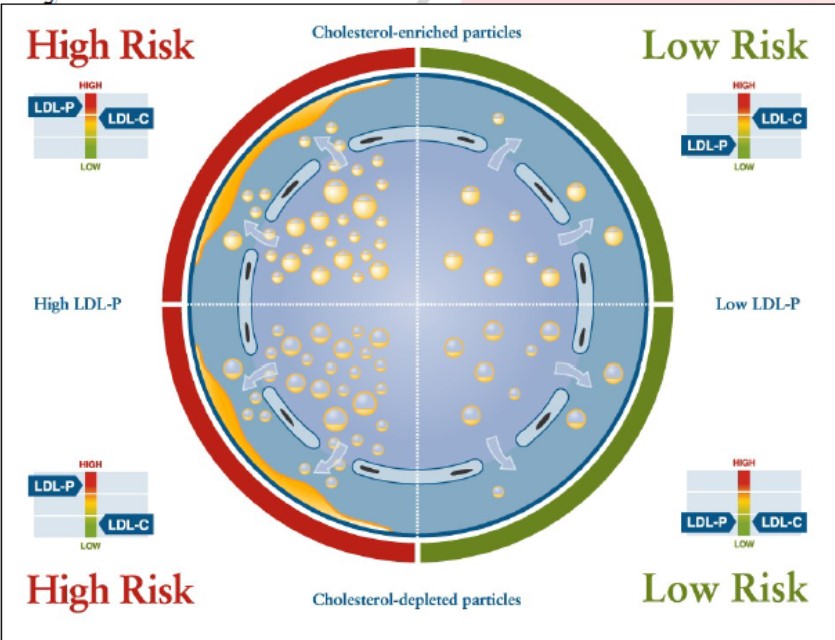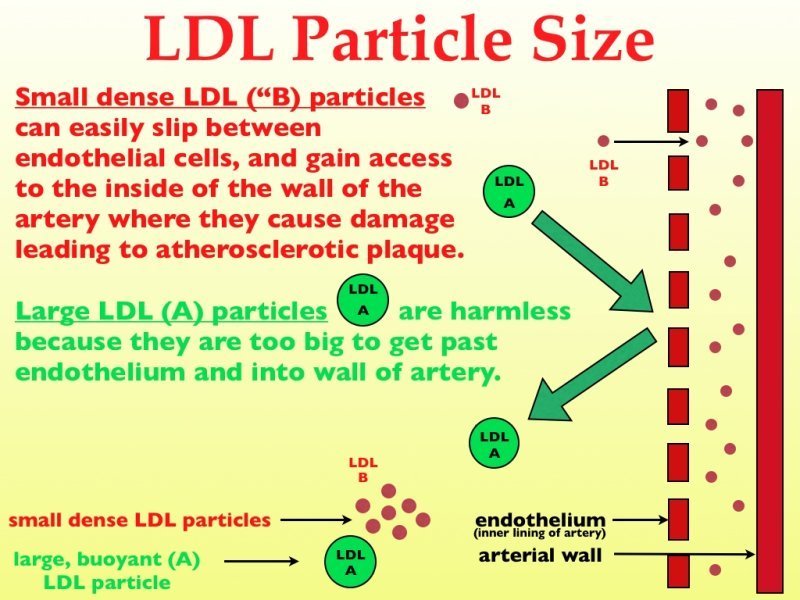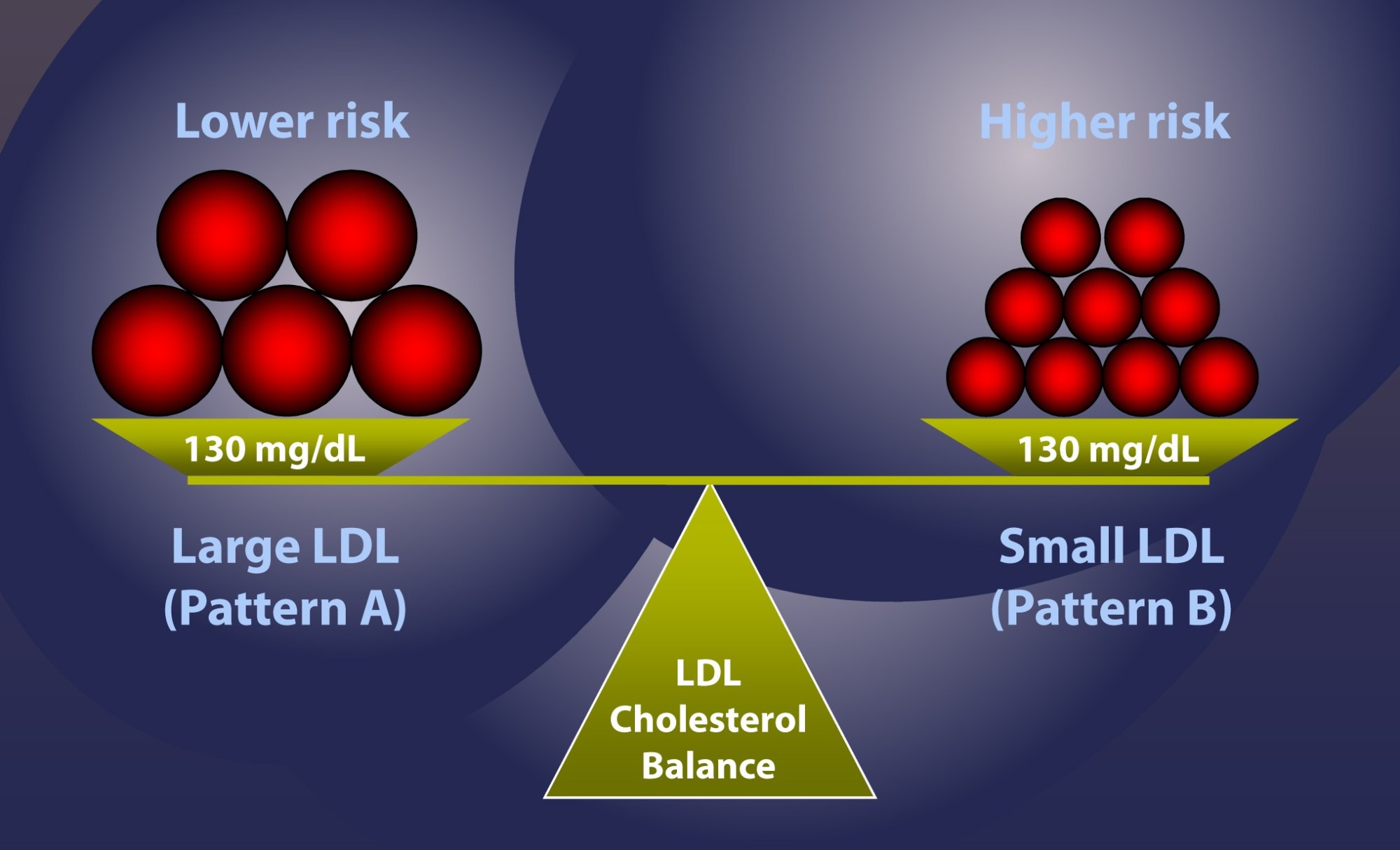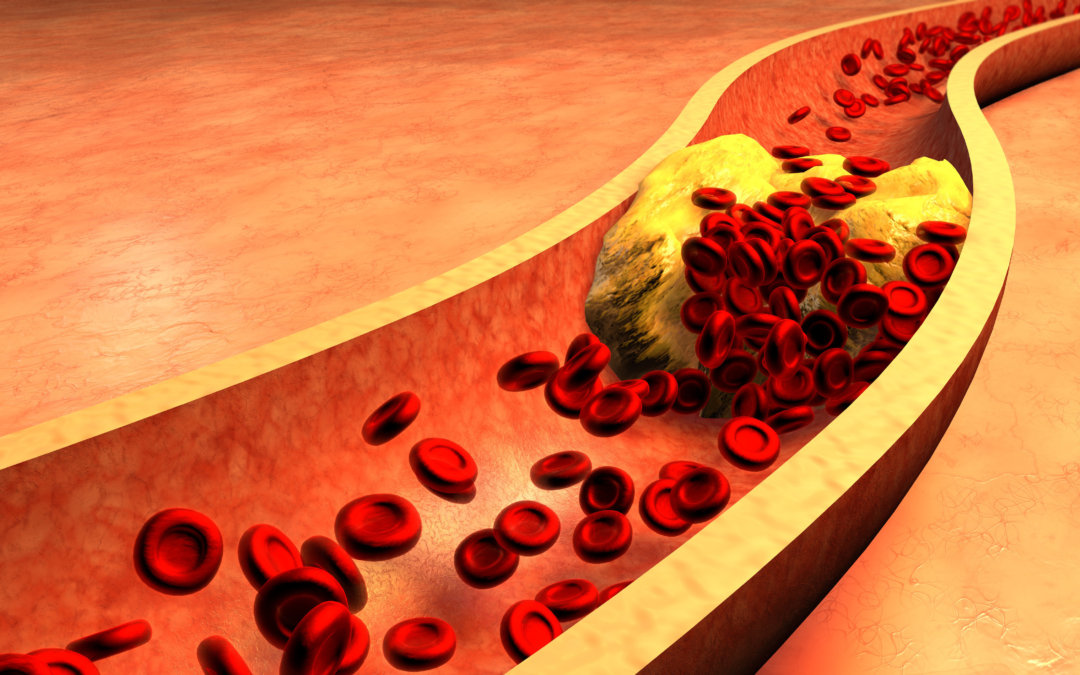The Traditional/Basic Lipid Panel
A basic lipid panel tests the following markers:
- Total Cholesterol
- LDL
- HDL
- Triglycerides
A basic lipid panel is an important and cost-effective marker of your metabolic function. All adults should have their lipid panel checked routinely for basic health monitoring. See How to Heal Your Metabolism for a complete discussion of metabolic dysfunction. There are however some circumstances in which the basic lipid panel may be “falsely normal” or may not provide a complete picture of metabolic function and cardiovascular risk.
LDL-P vs LDL-C: Particle Number vs Particle Concentration
Measuring the number of LDL particles allows clinicians to get a better cardiovascular disease risk profile than LDL concentration alone.
We might think of lipoproteins as cars on a highway. In this analogy, LDL-C (particle concentration) is the average number of people per car. It actually represents the concentration of cholesterol molecules in the LDL particle. LDL-P (particle number); however, is the number of cars on the highway. It is the actual number of LDL particles in the system.
Studies that show LDL-P is superior to LDL-C include:
- J Clin Lipidol. 2007 Dec;1(6):583-92
- Arterioscler Thromb Vasc Biol. 2002 Jul 1;22(7):1175-80.
- Circulation. 2002 Oct 8;106(15):1930-7.
- Am J Cardiol. 2002 Jul 15;90(2):89-94.
- Circulation. 2006 Mar 28;113(12):1556-63. Epub 2006 Mar 13.

Particle Size
In addition to the number of LDL particles in the system, the size of the particles provides additional information. Studies show that small LDL particles are much more atherogenic than large LDL particles. The reason why is because larger LDL particles cannot get through the endothelial layer of the artery, whereas smaller LDL particles pass through and damage the arterial wall.

From http://www.urantiagaia.org/eng/vital/timsmith/outsmarting_n1_killer12.html

From https://www.garmaonhealth.com/ldl-cholesterol-particle-size-determines-your-risk-for-heart-disease/
As we can see, two people with identical LDL-C levels may have completely different risk profiles. Pattern A above has a lower LDL particle number and higher particle size, which is associated with a much higher risk than Pattern B, which is a high LDL particle number and a lower particle size.
Apolipoproteins
- Apolipoprotein B (Apo B) – the protein attached to the LDL molecule and scientifically accepted as a marker of atherogenic particle number. Several studies have shown ApoB to be a better predictor of cardiovascular risk than LDL-C
- Lipoprotein (a) (Lp(a)) – this is an LDL particle containing an abnormal protein. It is an inherited abnormality that carries a significantly increased risk of cardiovascular disease. Its structure is similar to plasminogen, thus it causes reduced fibrinolysis (clot breakdown) and increased hypercoagulability.
The Advanced Lipid Panel should be used in conjunction with inflammatory markers (i.e. CRP, ferritin) as well as other metabolic, hormonal, and nutritional markers to determine a holistic profile of one’s overall cardiovascular risk.

